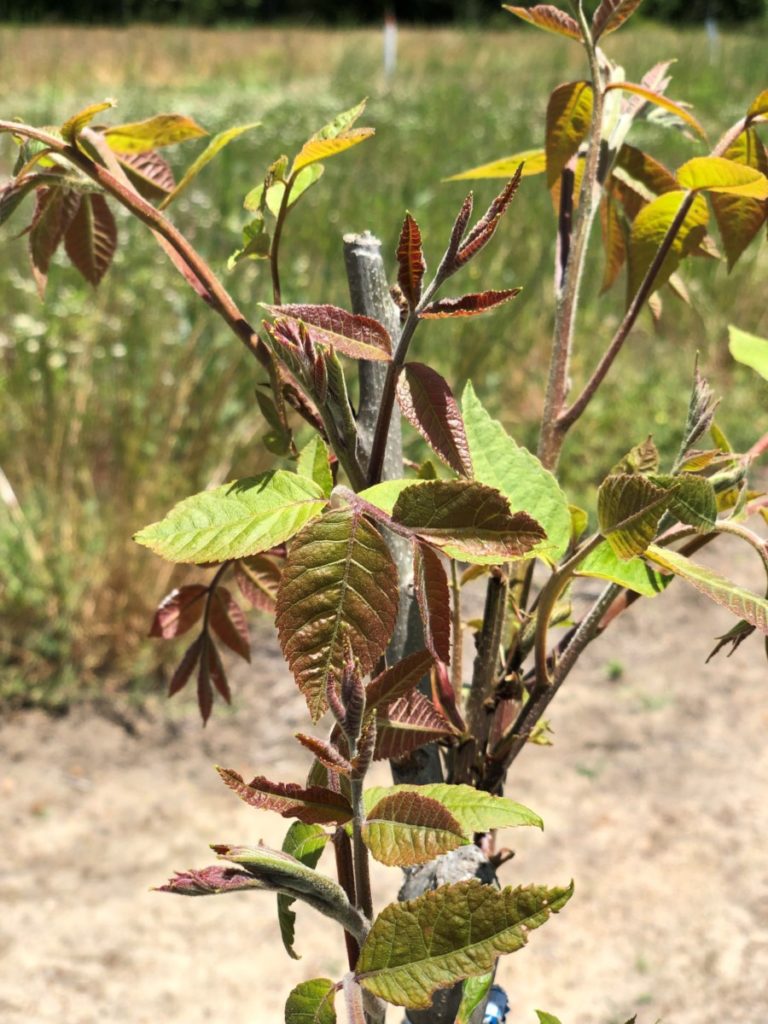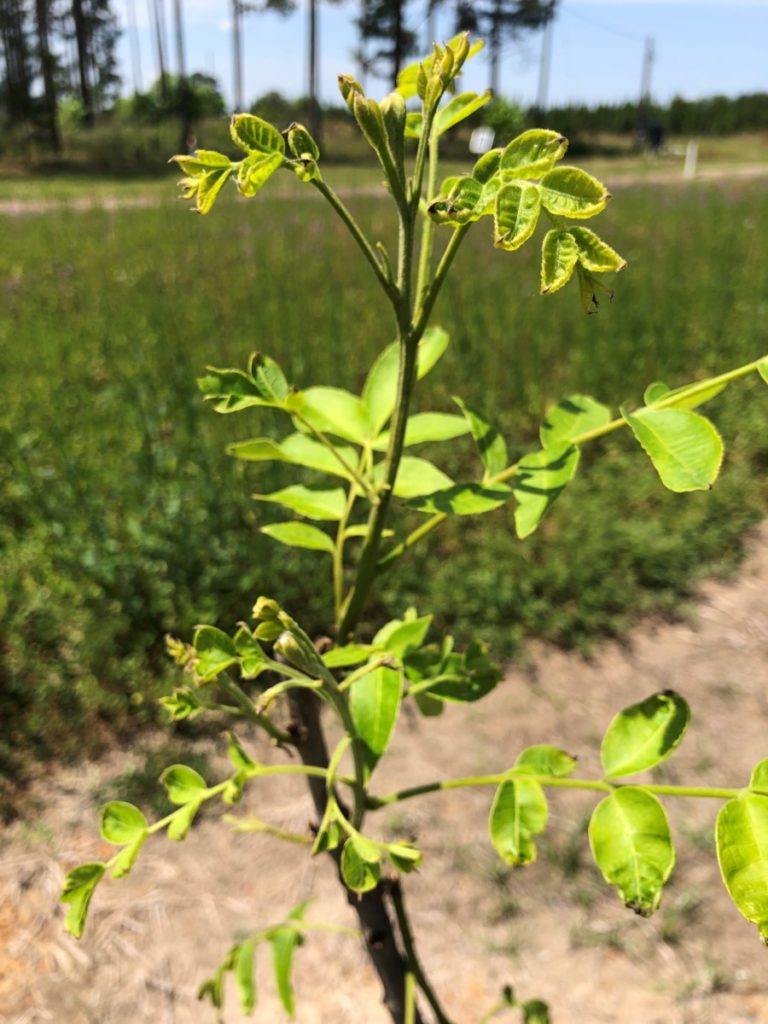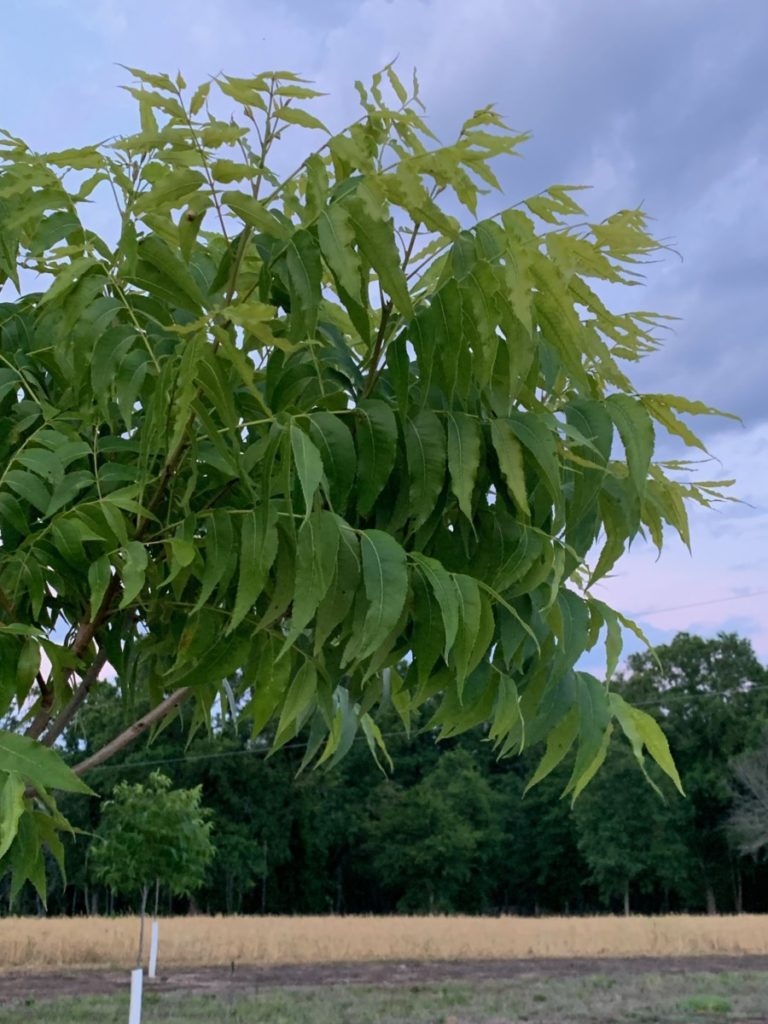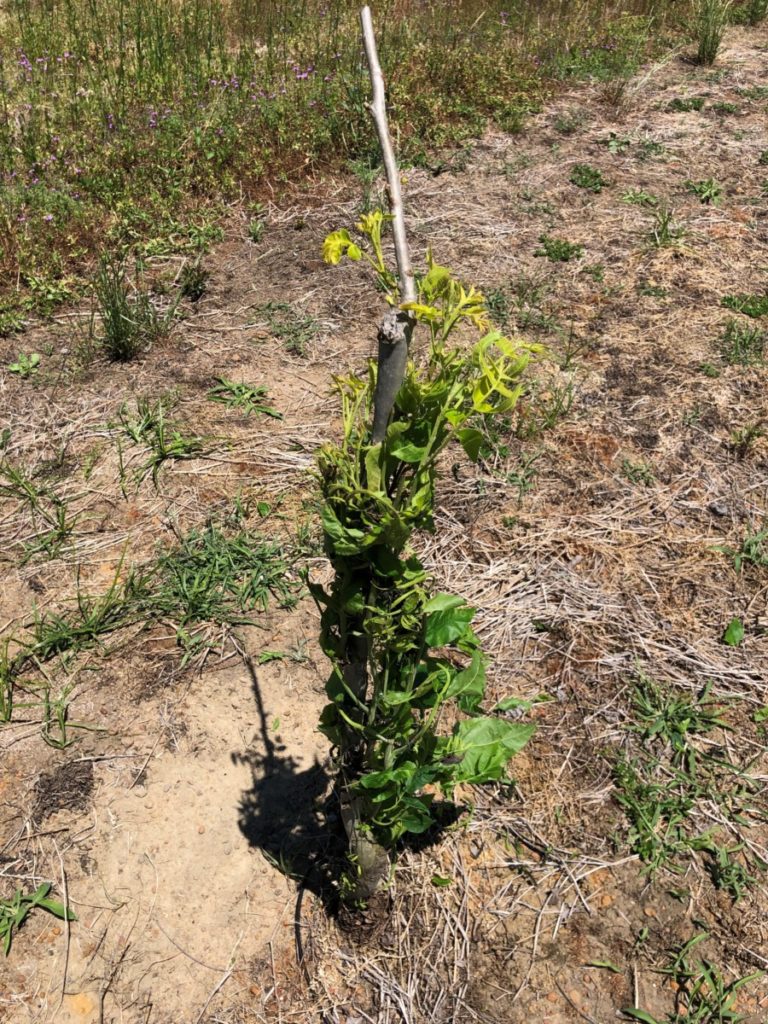We’re seeing different issues on young and newly planted trees we want to share. These issues relate to insect damage and nutritional problems. It is common to see many of these issues in newly planted trees.
Insect Damage
For young trees, Ambrosia beetle and pecan budmoth are our most consistent insect pests. The Ambrosia season was typical. It appears our second flight has passed, and those beetles will become less active now. However, pecan budmoth is active and damage is showing where budbreak sprays were not made. Here is a picture to demonstrate:

The trees with good leaf growth were sprayed with a budmoth product at budbreak, and the other trees were not. The trees without good leaf growth were sprayed a month after budbreak. This is the importance of spray timing for pecan budmoth. Trees with heavy pressure from budmoth appear to not budbreak or have died. In this situation, a knockdown insecticide – to kill the active caterpillars – should be sprayed followed by a residual application.
Another issue (below) is the major suckering of these 1st and 2nd year trees. This was obvious once the tree guards were removed. The suckers are growing due to the stress from budmoth damage on exposed leaves. These suckers need to be removed when trees are sprayed so its energy can be put back into the top leaf.
Nutrient
Some growers have sent pictures of “purple” colored leaves on young trees. When a plant shows a purpling color, it is most always a deficiency of phosphorus. Yellowing is associated with many other nutrients including nitrogen and potassium. The way a plant takes up these nutrients from the soil is different. Because nitrogen is mobile in the soil, it moves with water across the roots often referred to as ‘mass flow.’ Phosphorus is unlike nitrogen and potassium and has very little soil mobility. The way a plant takes up phosphorus is when a root grows to the P in the soil, referred to as ‘root interception.’
With these younger trees without established roots OR cooler weather slowing down root growth, it is common to see this deficiency. This does not change what we do in terms of our fertilization. Continue to fertilize with a complete fertilizer and rate according to tree age.

A very common deficiency on newly planted trees is nickel deficiency or ‘mouse ear.’ It is easy to tell by the leaves which become round in shape. This is site specific where nickel is difficult for newly planted trees to take up. Nickel competes with many nutrients in the soil. If you see this in your young trees, use a foliar nickel product and spray leaves at a rate of 1.5 qt / 100 gallons of water. You sometimes have to spray multiple times a year. If the problem persists, make a spray in September or October since the tree stores nickel in the buds.

Young trees fight zinc deficiency for the same reason as nickel. Zinc deficiency in pecan is characterized by “wavy” or “curly” leaf edges. Grower will ask if they need to apply soil zinc. The answer is yes, but not for the current deficiency. Most soils need zinc since pecan requires zinc for nut production. Mature trees take up zinc from both the SOIL and LEAVES. But it must be able to take up zinc in the soil because just leaf sprays will not be sufficient for its needs. This is why we apply 1 – 3 lbs of zinc per tree every year for the first four years.
If young trees have zinc deficiency, it is normal. Go ahead and apply foliar zinc and 1 quart per 100 gallons of water on to those trees. Sometimes zinc deficiency and glyphosate injury appear similar since they are both yellow in color. The difference with glyphosate is the leaves appear “thin” or “strapped”.



